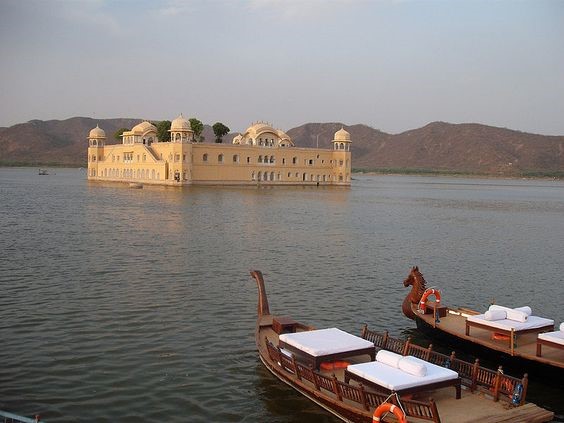Welcome to Travel Places 24 X 7! In this blog, we explore the vibrant Pink City, Jaipur, Rajasthan, and introduce you to the Jaipur’s Top 5 Attractions. From the grand Amer Fort to the architectural marvel of Hawa Mahal, Jaipur offers rich history and culture. Don’t miss the awe-inspiring City Palace, the intricate Jantar Mantar, and the unique Jal Mahal. Join us as we take you on an unforgettable journey through Jaipur’s iconic landmarks. Stay tuned for more travel inspirations!
1. City Palace
The City Palace in Jaipur is spread out over a series of courtyards. It was founded in 1727 by Maharaja Sawai Jai Singh II as part of his ambitious city project, and his successors continued to ornament and add to the elegant buildings up until the 20th century. The palace has always been much more than the grand residence of a royal family.
2. Amber Fort
Amber Fort is situated in the valley of the Aravalli ranges just below Jaigarh Fort. Prior to shifting their capital to Jaipur, Amber was the capital of the Kachhwaha Rajput’s. Amber was initially under the domain of the Susawat Meena tribe. In the 11th century, Dulahrai (Dhola), the son of Sodhadeva laid the foundation of the Kachhwaha dynasty in the Dhundhar region. His son, Kakil Dev took over the reign of Amber from the Meena’s. Raja Man Singh I started the construction of the new palace complex in the end of the 16th century. After Raja Man Singh I, Mirza Raja Jai Singh I and Sawai Jai Singh II made modifications and changes as per the needs from time to time. They also changed the interior decoration as per their own interest. The entire fort constructed in four stages.
3. Hawa Mahal
The Hawa Mahal is a palace in the city of Jaipur, Rajasthan, India. Built from red and pink sandstone, it is on the edge of the City Palace, Jaipur, and extends to the Zenana, or women’s chambers.
Hawa Mahal is known as the “palace of winds“. Maharaja Sawai Pratap Singh built it palace in 1799. Hawa Mahal is considered to be unique as it has many small windows and balconies that seem like a honeycomb.
4. Nahargarh Fort
Nahargarh fort was built by Maharaja Sawai Jai Singh II in the year 1734 for the sake of defence of Jaipur city. Originally this fort was named as Sudarshangarh, dedicating to Nahar Singh Bhomia. The fort comprises extensive Tanka and two splendid step wells for water management. Diwane-e-Aam, treasury and rest rooms for soldiers were built by Maharaja Sawai Jai Singh II (1699-1743), Hawa Mandir by Maharaja Ram Singh II (1835-1880) and Shri Madhvendhra Bhawan by Maharaja Sawai Madho Singh II (1880-1992). Nawab Wazir Ali of Awadh was given shelter here. The Man palace situated in the fort is known as Shri Madhvendra Bhawan. This double storied palace divided in ten apartments, out of which one was used by the king himself and other nine were built for his concubines. The whole palace adorned with excellent arish work and fresco paintings. The panoramic scenic surroundings of Pink City Jaipur can be viewed from the terrace of Shri Madhvendra Bhawan.
5. Jal Mahal
The Jal Mahal is a splendid palace standing amidst the tranquil Man Sagar Lake, known as the “Water Palace”. Its construction in the 18th century was initially intended as a hunting lodge for the king and his entourage, but the palace has now become a famous tourist attraction in Jaipur. With its symmetrical pink sandstone design, the Jal Mahal exudes classic Rajput architecture.
 TRAVEL PLACES 24X7 Plan your Holidays and Vacation any time
TRAVEL PLACES 24X7 Plan your Holidays and Vacation any time





